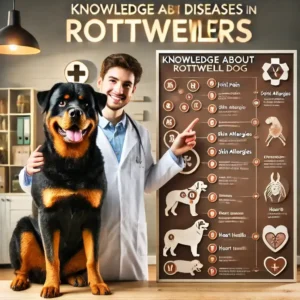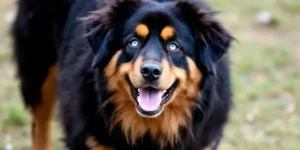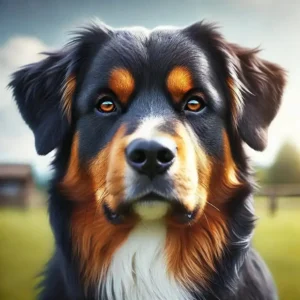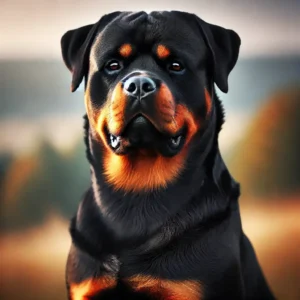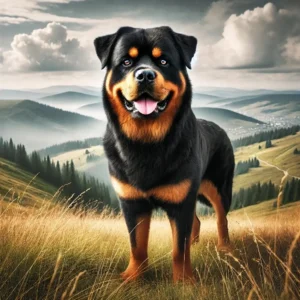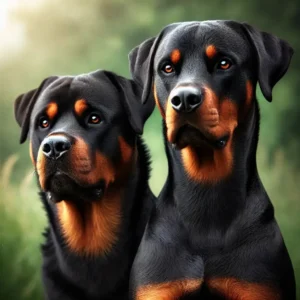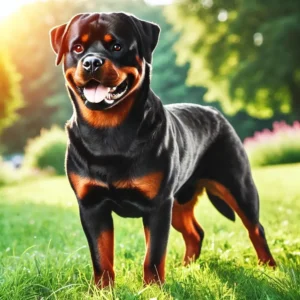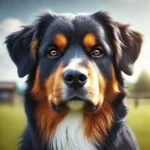Serbian Rottweiler vs German Rottweiler: Breed Differences
Breed DifferencesThe Siberian Rottweiler is an interesting crossover breed that combines the quality and dependability of the Rottweiler with the perseverance and nimbleness of the Siberian Husky. This blend is also known as the Siberian Rottie, a unique type of Rottweiler that differs from the standard Rottweiler according to the American Kennel Club.
It is well known for those searching for a canine with defensive instincts and a courageous soul, particularly in the German Rottweiler vs American debate. With a combination of quality, insight, and excellence, the Siberian Rottweiler is a standout among crossover pooch breeds, especially when compared to the American Rottweiler’s traits.
We’ll investigate the Serbian Rottweiler in-depth, covering its origins, physical characteristics, personality, care needs, and more to assist you in determining whether this special blend is the right fit for your family. We’ll also reply to regularly inquired questions and offer direction on what to anticipate on the off chance that you welcome one of these loyal companions into your life.
Roots of the Siberian Rottweiler

The Siberian Rottweiler may be a generally unused crossover puppy, combining the Rottweiler, a breed known for its quality and defense, with the Siberian Imposing, celebrated for its continuance and inviting mien. Each parent breed brings interesting characteristics to the blend, making a flexible and adjusted companion.
- Rottweiler Roots: The Rottweiler began in Germany, where it was utilized as a crowding and protect pooch. Known for its strong construction and defensive nature, the Rottweiler is profoundly trainable and steadfast, making it a perfect protective pooch and family defender, especially when considering the Rottweiler vs American Rottweiler vs German Rottweiler debate.
- Siberian Imposing Roots: The Siberian Imposing hails from Siberia, Russia, where it was bred by the Chukchi individuals for sledding and continued work. Known for its stamina, neighborliness, and striking wolf-like appearance, the Husky is both a working canine and an adoring family pet.
The Siberian Rottweiler combines these differentiating characteristics, making a canine that’s both effective and congenial, defensive but inviting, much like the Roman Rottweiler.
Exploring the Serbian Rottweiler: Traits and Comparisons
With distinct genes and FCI-standard conformation, the Serbian Rottweiler is a robust and devoted breed, different from the German and American varieties. Like the Siberian Husky, another common working breed, the German Rottie is also known for its strength. Serbian Rottweilers are known for their protective attitude and need early training and socialization to flourish as well-behaved pets. Rottweilers are intelligent and easy to train, but their powerful build and temperament make consistent training essential for a balanced, loyal dog.
Physical Characteristics
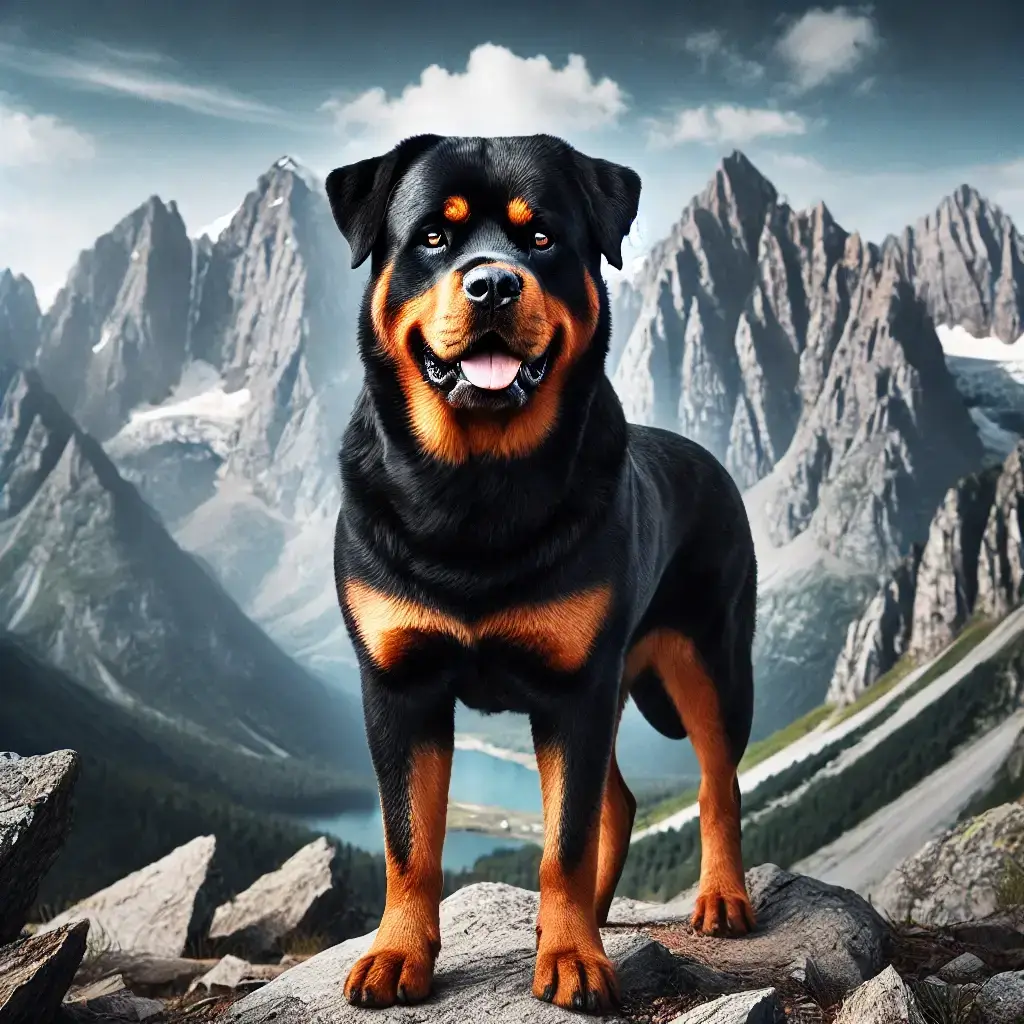
The Siberian Rottweiler regularly shows a blend of both parent breeds. Here are a few of their standout physical characteristics:
Measure and Construct
- Tallness: This breed blend, more often than not, stands between 21-26 inches tall at the shoulder, typical for large dog breeds.
- Weight: Grown-up Siberian Rottweilers by and large weigh between 50-100 pounds, with guys frequently bigger than females.
- Construct: They tend to have a solid, well-proportioned body, with a construct inclining toward either the Rottweiler’s vigorous outline or the Siberian Husky’s more dexterous structure.
Coat and Color
- Coat Sort: Their coats change from brief to medium length, and they may acquire the Husky’s thicker twofold coat, making them way better suited to cooler climates.
- Colors: Common coat colors incorporate dark, tan, and gray, with a few mutts displaying the notorious “imposing” blue or brown eyes.
Eyes and Facial Structure
Siberian Rottweilers frequently acquire expressive, almond-shaped eyes from their Imposing parent, and eye colors can run from brown to striking blue, or indeed heterochromia (two different-colored eyes). Their faces regularly combine the Husky’s lively expression with the Rottweiler’s solid jawline and more genuine look.
Personality and Identity
The Siberian Rottweiler’s identity may be a balanced mix of both guardians. Here’s what you’ll be able, by and large, to anticipate from this half-breed breed: a mix of traits from both the Rottweiler and Husky, making it a good dog for active families.
When it comes to choosing a dog that combines loyalty, intelligence, and strength, many people find themselves drawn to the Rottweiler breed. Rottweilers are known for their imposing appearance and gentle temperament. Are among the best breeds for families and individuals looking for a loyal companion. There are several variations of this breed, including the American Rottweiler and the German Rottweiler. Each with distinct characteristics influenced by their breeding history.
One of the most prominent differences between German and American Rottweilers is the muzzle. German Rotties often have a longer muzzle and a more robust build, which are key traits that distinguish them from other types like the Mississippi Rottweilers. While American Rottweilers may have a shorter, broader head.
Both types can be purebred, but the majority of Rottweilers you see in the United States are bred for show rather than working ability.
What is a Serbian Rottweiler?
If you’re considering adding a Rottweiler to your family, you might want to look into reputable Rottweiler breeders associated with the American Kennel Club. A good breeder will adhere to strict adherence to breed standards and prioritize temperament and health in their breeding program. You might also come across Serbian Rottweiler puppies, which are known for their strong lineage and excellent temperament. Born in Serbia, these gorgeous puppies are often raised with the same care and attention as their German counterparts, reflecting the quality of the type of Rottweiler.
When bringing home a new Rottweiler, whether a female Rottweiler or a male Rottweiler, early training is crucial for this large dog breed. Puppies are adorable and full of energy, but they require lots of time and patience to become well-mannered adults. Start with basic commands and gradually introduce more complex training as they grow. Rottweilers are intelligent dogs, and with the right puppy training, they can excel in obedience and even become service dogs.
Choosing a responsible breeder from the American Kennel Club is key, as poorly bred Rottweilers may develop behavioral issues. Naturally aloof, Rottweilers form loyal bonds when properly socialized and loved. Whether you prefer a German Shepherd or Serbian Rottweiler, understanding their differences helps in making the right choice. With good care and training, these dogs become loyal companions and protectors, embodying the spirit of a good dog. Supporting ethical breeding practices keeps this incredible breed strong.
Insights and Trainability
Smart and Speedy to Memorize: Siberian Rottweilers acquire tall insights from both parent breeds, making them speedy learners.
- Willfulness: Like their imposing parent, they may show intermittent unyielding quality, particularly on the off chance that not locked into exercises that challenge their minds.
Devotion and Defense
- Defensive Instinctual: The Rottweiler side brings a solid defensive streak, making this crossbreed an excellent guard dog.
- Inviting Nature: The Siberian Husky’s inviting mien tempers the Rottweiler’s defense, making the Siberian Rottie more agreeable and receptive to family and companions.
Vitality Level and Liveliness
- Tall Vitality: These pooches are profoundly enthusiastic and require ample exercise day by day.
- Lively souls: Siberian Rottweilers are perky, making them awesome companions for families with dynamic ways of life. They appreciate running, climbing, and playing in open spaces.
Care and Support
Legitimate care is fundamental to guarantee a cheerful, sound Siberian Rottweiler. Here are a few key viewpoints to consider:
Work out Needs
Due to their tall vitality levels, Siberian Rottweilers require a bounty of work out, in a perfect world an hour or more each day, as all dogs must to stay healthy. Exercises like running, dexterity courses, and get are perfect for them. Proprietors ought to moreover give mental incitement, such as confusing toys or submission preparation.
Prepping Prerequisites
- Coat Upkeep: Their coat requires normal brushing, particularly on the off chance that they acquire the Siberian Husky’s double coat. Brushing once a week will minimize shedding and keep their coat solid.
- ShoweringSiberian Rottweilers, as it were, require periodic showers, as too much washing can strip characteristic oils from their skin, just like the care needed for a standard Rottweiler.
- Nail and Dental Care: Customary nail trimming and dental care are fundamental for by and large well-being.
Diet and Sustenance
Nourishing an adjusted slim-down is pivotal to preserving their muscle mass and vitality. Look for high-quality canine nourishment wealthy in protein and avoids fillers. Consult your vet regarding parcel sizes and dietary needs based on your dog’s age, weight, and activity level.
Wellbeing and life expectancy
Siberian Rottweilers are by and large healthy, but like all Crossbred pooches, such as the German Rottweiler vs American Rottweiler, can be prone to certain health issues. Here are a few conditions to observe:
- Hip and Elbow Dysplasia: A common issue in larger breeds, dysplasia can lead to joint torment and joint pain later in life.
- Eye Issues: The Siberian Husky’s heredity can sometimes lead to eye issues like cataracts or dynamic retinal decay.
- Bloat: As a sweeping, deep-chested breed, Siberian Rottweilers can be in danger of bloat, a conceivably life-threatening condition.
With suitable care, a Siberian Rottweiler’s life expectancy customarily ranges from 10 to 13 a long time.
Planning Tips for Siberian Rottweilers
Siberian Rottweilers are profoundly trainable but may acquire the Husky’s autonomous streak, making them a distinct type of Rottweiler that should be understood in the context of Rottweilers being bred for various traits. Here are a few preparation tips:
- Start Early: Start preparing as early as possible to set up great habits.
- Utilize Positive Reinforcement: Reward-based preparation works well, as this breed reacts emphatically to treats and praise, especially when trained by reputable kennel standards.
- Socialization: Uncover them to modern individuals, creatures, and situations from a youthful age to construct certainty and diminish over-protectiveness.
Siberian Rottweiler as a Family Pet
The Siberian Rottweiler’s mix of defensive instinct and agreeable nature makes it a great family pet. They are for the most part great with children and other pets, even though early socialization is key to guaranteeing positive intuition. Families that appreciate open-air exercise will discover this crossover breed to be an eager companion.
Rottweilers are a popular breed all around the world because of their strength, intelligence, and loyalty. Depending on local breeding standards, several varieties of Rottweilers, such as American, German, and Serbian, each have distinctive characteristics that highlight what’s the difference among them.
While responsible breeders worldwide concentrate on champion bloodlines to lower concerns like hip dysplasia, German breeders adhere to stringent VDH and FCI requirements to guarantee exceptional health and temperament. Because of their versatility, Rottweilers can be used as working, service, and herding dogs, showcasing the adaptability of this dog breed. For these self-reliant, smart dogs, early training is essential, and it takes patience and dedication to bring out the best in them.
German vs. Serbian Rottweilers: Key Traits and Differences
Serbian and German Rottweilers have unique traits that make each type special. German Rottweilers, bred to ADRK standards, are known for their robust build and strong work drive, while Serbian Rottweilers are often stockier with a unique Serbian lineage. Choosing a Rottweiler puppy requires understanding these differences, focusing on pedigree, health (OFA and JLPP testing), and the importance of early training for a confident, well-behaved dog. Whether as a family pet or working dog, well-bred Rotties need regular exercise and mental stimulation to thrive.
Conclusion
The Siberian Rottweiler could be an effective, steadfast, and profoundly lively canine that brings together the leading characteristics of the Rottweiler and the Siberian Imposing, similar to the American and German types. They require sufficient workouts, mental incitement, and a committed preparation approach to flourish in a family environment. For dynamic people or families, this interesting blend offers a superb combination of assurance, liveliness and companionship.
On the off chance that you’re considering a Siberian Rottweiler, be prepared for a steadfast and courageous companion that will require a bounty of time,consideration, and adoration.
Frequently Asked Questions:
1. Are Siberian Rottweilers great with children?
Yes, with legitimate preparation and socialization, Siberian Rottweilers are for the most part great with children. Be that as it may, supervision is prescribed to guarantee positive intuition, particularly with more youthful kids.
2. How much workout does a Siberian Rottweiler require?
This breed requires at least an hour of workout every day. They flourish with open-air exercises like climbing, running, or deftness preparation.
3. Do Siberian Rottweilers shed a lot?
Shedding can shift depending on the coat they acquire. On the off chance that they have a twofold coat just like the Imposing, anticipate direct to overwhelming shedding, particularly amid regular changes.
4. Are Siberian Rottweilers troublesome to prepare?
They are profoundly clever but can be adamant, particularly in the event that they acquire more Imposing characteristics. Steady preparation with positive support works best.
5. What is the life hope of a Siberian Rottweiler?
On ordinary, Siberian Rottweilers live between 10 to 13 a long time.

